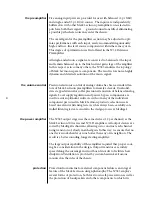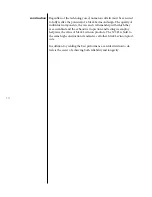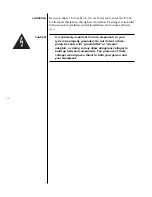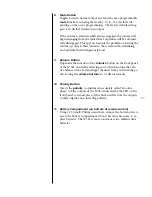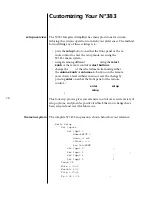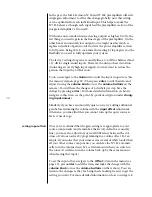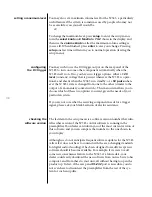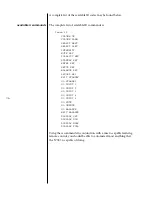
21
tip polarity for
external IR input
+
–
5 volts @ less
than 100 mA
If you would like more information on the possibility of using an
infrared repeater with your Nº383, please contact your Mark
Levinson dealer.
3
DC trigger in and out
On a simpler level than PHAST, AMX, or Crestron, some systems
control whether a given component is on or off (or more accu-
rately, “operating” or “in standby”) by means of a simple control
voltage.
If the appropriate 3-12V level “trigger” signal arrives at the
trig-
ger input
of the Nº383, it turns on. When the Nº383 turns on, it
passes along a trigger signal to another component. In this way, it
is possible (if you like) to set up a “daisy chain” of components
that can be controlled by one another (at least to some degree.)
The Nº383 can produce and send from its
trigger output
either a
5V pulse
(
such as a momentary contact switch might make
) or a
12V level
signal (
where the presence of 12V forces the unit out of
standby, and its absence forces it into standby
). This choice is made
in the Nº383’s menu system. (See
Customizing Your Nº383
for
more details.)
4
RS-232 port
This port is used both for downloading new operating software
into your Nº383 Reference Preamplifier (should new features ever
be added, for example), and also for external control of the Nº383
by systems such as AMX
™
and Crestron
™
. For more information,
please contact your dealer and ask about either AMX or Crestron
home automation systems.
5
Comm Port
This communications port allows the Nº383 to “link” to certain
compatible Mark Levinson components. (See “
Linked Functions
.”)
After making or changing Link connections, cycle power on all your
Linked components to ensure that they “see” the change.
Summary of Contents for N383
Page 1: ...N 383 Integrated Amplifier Owner s Manual MADRIGAL AUDIO LABORATORIES R...
Page 3: ......
Page 15: ...15...


